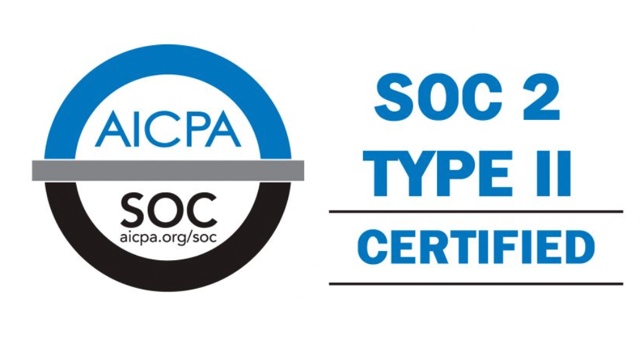
From 100 to 1 million Transfers: Scaling MFT for Enterprise Growth
From 100 to 1 million Transfers: Scaling MFT for Enterprise Growth Ever wondered what happens when your daily file transfers multiply by
Transaction Manager in the EBICS Server is responsible for maintaining the transaction states. It determines the segment that is required to generate the XML response message.
Transaction Manager handles the upload and download transaction flows and supports segmentation and recovery of order data.
The FUL order type is used to upload data to a bank.
The upload transaction comprises the following phases:
The user sends the upload (FUL) request to the bank. FUL is a bank-technical upload order type.
The EBICS Order Authorization service handles incoming order requests for the bank-technical upload order type. If an order has obtained the number of signatures required, this service forwards the order to the subscriber upload mailbox. Otherwise, this service retains the order data in the database until all the required number of signatures is obtained.
The handleEBICSRequest business process receives a user’s request. If the user’s request contains the last segment of the order data, it invokes the EBICSOrderAuthorizationProcessing business process asynchronously to unpack the order data and generate the following files:
A user initiates a transaction by submitting the requests containing information about the incoming order. Based on this information, the EBICS Server verifies the order type, performs the message replay test, verifies message authentication, and checks user authorization before accepting the request.
After successful verification of the order data, the bank generates a transaction ID and includes the ID in its response to the user.
When more than one segment is required to transfer order data, the bank performs message authentication, verifies the transaction, verifies the segment number and size. After the EBICS Server receives the last segment of the order data, the complete order data is forwarded to the EBICSOrderAuthorizationProcessing business process asynchronously and the transaction ends.
The EBICSOrderAuthorizationProcessing business process unpacks the order data and forwards it to the user upload mailbox. The EBICSOrderAuthorizationProcessing business process generates post processing report (PSR) and routes it to the user’s download mailbox. This business process also generates the .SIG and .PRM files to be forwarded to the user’s upload mailbox. An .err file is generated when EBICSOrderAuthorizationProcessing business process encounters an error, for example, an invalid electronic signature. Use the .err file to inspect an invalid order data file, if necessary.
The FDL order type is used to download data from a bank.
The download transaction comprises the following phases:
A user submits the FDL order type to the bank. The user requests the download of the .PSR report to get the status of the FUL request. The user can also request to download valid file formats other than .PSR by using the FDL order type.
The bank verifies the message from the user. After the bank verifies the user’s request, the bank collects the order data from the user’s download mailbox based on the file format information in the request.
If more than one message matches the file format, the bank joins the contents of each message into a single order data and invokes the order data processor synchronously to pack the order data.
If the encoded form of the order data exceeds 1 MB, the order data is separated into segments. The first segment of the order data and the transaction ID is included in the response to the user.
The user sends the request for the next data segment. The bank authenticates the message, verifies the transaction, and the segment number and size.
In each transfer phase, the bank transfers all the segments until the last segment of the order data is included in its response to the user.
After receiving the last segment of the order data from the bank, the user initiates the last phase, the acknowledgement request, to indicate that the data transfer has been successful.
If the bank receives a positive acknowledgement (receipt code=0) from the user, the bank moves the downloaded messages from the user download mailbox to the user archive mailbox. If the bank receives a negative acknowledgement from the user, the bank retains the downloaded messages in the user’s download mailbox.
If a user wants to download valid file formats other than the .PSR reports from the user’s archive mailbox, the user must specify a date range in the EBICS request. The user must ensure that the date range matches the drop date of the .DAT file when moved from the user’s download mailbox to the user’s archive mailbox.
EBICS Banking Server is responsible for combining all these segments to reinstate the order data to its original form.
The order data request (upload or download) cannot exceed 1 MB in compressed, encrypted, base64 encoded form. If the order data request exceeds 1 MB, the encoded form must be separated into segments.
If an error occurs during the delivery of the order data segments, recovery can be performed. The user can download or upload the appropriate segment according to the recovery point sent in response by the server.
Recovery allows the transmission of an order to continue despite the occurrence of an error, without necessitating the retransmission of all order data segments that have been transmitted successfully.
EBICS Banking Server supports the Distributed Electronic Signature (VEU), which allows multiple partners (or subscribers) to authorize an order.
Authorized signatories of a customer can use different signature processes which may support different hash processes resulting in different hash values. In the VEU process, the hash value of the order data is provided when the order types HVD and HVZ are executed. This hash value is derived from the signature version used by the subscriber executing HVZ and HVD. The hash value is provided with the signature version used as an attribute.
OZHNN and signing with signature class E, or T.Managing Subscription Manager Information
Sterling B2B Integrator - EBICS Server Concepts
Managing Keys
Browse Categories
Share Blog Post

From 100 to 1 million Transfers: Scaling MFT for Enterprise Growth Ever wondered what happens when your daily file transfers multiply by

In today’s fast-paced world of data analytics and AI, optimizing your data infrastructure is key to unlocking valuable insights and driving innovation.

In today’s fast-paced world of data analytics and AI, optimizing your data infrastructure is key to unlocking valuable insights and driving innovation.
We are a forward-thinking technology services provider dedicated to driving innovation and transformation across industries.


| Cookie | Duration | Description |
|---|---|---|
| cookielawinfo-checkbox-analytics | 11 months | This cookie is set by GDPR Cookie Consent plugin. The cookie is used to store the user consent for the cookies in the category "Analytics". |
| cookielawinfo-checkbox-functional | 11 months | The cookie is set by GDPR cookie consent to record the user consent for the cookies in the category "Functional". |
| cookielawinfo-checkbox-necessary | 11 months | This cookie is set by GDPR Cookie Consent plugin. The cookies is used to store the user consent for the cookies in the category "Necessary". |
| cookielawinfo-checkbox-others | 11 months | This cookie is set by GDPR Cookie Consent plugin. The cookie is used to store the user consent for the cookies in the category "Other. |
| cookielawinfo-checkbox-performance | 11 months | This cookie is set by GDPR Cookie Consent plugin. The cookie is used to store the user consent for the cookies in the category "Performance". |
| viewed_cookie_policy | 11 months | The cookie is set by the GDPR Cookie Consent plugin and is used to store whether or not user has consented to the use of cookies. It does not store any personal data. |
Thank you for submitting your details.
For more information, Download the PDF.
Thank you for registering for the conference ! Our team will confirm your registration shortly.
Invite and share the event with your colleagues
IBM Partner Engagement Manager Standard is the right solution
addressing the following business challenges
IBM Partner Engagement Manager Standard is the right solution
addressing the following business challenges
IBM Partner Engagement Manager Standard is the right solution
addressing the following business challenges